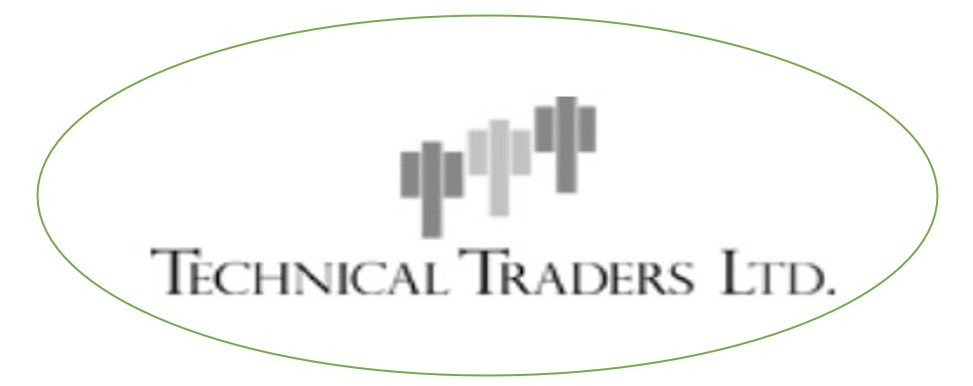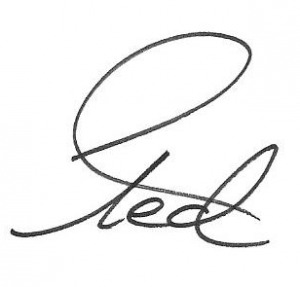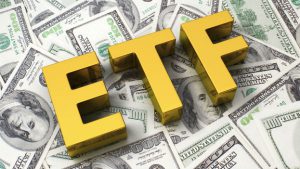Exchange Traded Funds –
What exactly are Exchange Traded Funds?
Better known as ETFs, Exchange Traded Funds are like Mutual Funds in the respect that they represent a pool of securities gathered for a specific purpose or investment goal. But the resemblance ends there.
ETFs are more versatile than Mutual Funds in that they trade on exchanges just like stocks, trade throughout the day, and have real-time valuations.
Today there are ETFs created for most any purpose you could think up. Originally designed to track the major indices like the S&P 500, the Nasdaq 100, the Dow Jones Industrial Average, and the Russell 2000, they have become much more specialized in the years since. Now they offer the retail trader an efficient, inexpensive, and less risky alternative to short selling, the futures markets, currency trading, and global markets that were not available in this easy-to-trade vehicle before the advent of the Exchange Traded Fund.
Compared to Mutual Funds, ETFs have a much greater transparency of purpose. You have a clear understanding of what holdings make up each ETF, so you can balance a portfolio for growth and risk management. Mutual Funds are a lot harder to dissect; so, if you own multiple funds, the chance of overlapping specific holdings without knowing it is very great. Other advantages of ETFs are:
- Lower Management Fees and no sales or advertising charges to lower performance, although normal brokerage commissions to buy and sell an ETF, like a stock, still apply.
- Lower Minimum Investment Requirements – you can just buy one share.
- Ability to be traded on margin, along with having Options, like stocks.
- Valuation is certain – they trade at a specific price, like stocks. Mutual funds estimate their Net Asset Value at the end of the day.
- Research and analysis is much easier with the greater transparency.
Managing a Portfolio Becomes Very Efficient with ETFs.
ETFs can form the basis of your longer-term strategies, while minimizing risk through personal management of individual positions, elimination of the single stock event risk, and being able to use options to enhance returns or protect against volatility. Inverse and leveraged ETFs are available along with Options, making ETFs a perfect vehicle for managing a portfolio using diversified trading Styles and Methods.

Chris Vermeulen of The Technical Traders, Your Wealth Management Partner, has put together three long-term portfolio management systems only using ETFs and one monthly Options Trading program to generate Income and manage risk. Using the fluctuations in a limited number of Index and Sector ETFs, Chris has been able to overcome the problems associated with diversification by asset class and trying to pick Stocks to match an investment strategy in a very fickle market. Long-term trading the market Trends (Bull and Bear) with his chosen ETFs will put you in the enviable position of beating The Market at every turn.

From a short-term perspective, InTheMoneyStocks, Your Stocks & Options Partner, covers ETFs and Options on ETFs as part of the normal trading process, so you can organize your trading parameters in multiple ways to meet your goals and risk guidelines. Combining Stock, Futures, and Forex ETFs will give you the best view of the overall market, and using Options on ETFs will enable short-term Swing Trading with a better Return on Investment. Nick and Gareth, with their individual trading systems, will enable any strategy you want to use.
- If you’d like to learn more about controlling your financial future, have a look at Education – The Path to Independent Wealth Management to get an overview of the steps I’ve laid out to get you there. Then, learn how to put it all together by letting The Diversified Trader – An Overview shine the light on the right path to creating your own Wealth Building Plan and making it work.
What’s the Difference between an Exchange Traded Note (ETN) and an Exchange Traded Fund (ETF)?
ETNs are unsecured debt obligations issued by a bank or other financial institution. Unlike bonds, though, they trade on exchanges during the day, like stocks and ETFs, and their performance is based on an underlying index or benchmark used to identify the purpose or investment objective of the ETN. So far, there’s not much difference between an ETN and an ETF: they both track major market indices, industry sectors, foreign currencies, emerging market indices, commodities, and other assets. ETNs also have leveraged and inverse products. The differences come in when you look at the structure of the ETN versus the ETF:
- ETNs are debt obligations backed by a financial institution; so, the credit standing of that financial institution is what is at risk, not anything to do with the assets in the benchmark. Since a major bank is usually behind ETNs, this concern is minimal except in times of unusual stress as was witnessed in the 2008/2009 market collapse.
- ETNs do not buy and hold assets to replicate the benchmark they’re using, whereas ETFs are investment companies and own the assets that make up the index or benchmark they are following. As an owner of an ETF, you own shares of a fund that represent an ownership interest in the underlying group of assets.
- ETNs can be more complex and specialized in nature; so, a careful look is warranted to understand their structure before using an ETN.
I bring this up only to highlight the difference and make everyone aware that there is a difference. Hope this helps to clear up any confusion you might have had. It will be rare that you’ll use an ETN, since ETFs have the coverage needed in most situations. Even with leveraged and inverse ETNs that you might run across, the advantage of using them in any trading strategy is minimal, because using options on regular ETFs serve the same purpose with less risk
What do Exchange Traded Funds Look Like?
It took me awhile to get a handle on all the ETFs on the market, and, in the end, it all came down to using those ETFs with the highest volume to insure liquidity and those with the highest option volume, so you had the versatility to manage most any position or strategy. Take a look at my High Option Volume ETFs to get an idea of the scope of that list.
To see what ETFs look like and the variety that’s available, I’ve put together a representative list of categories with some more popular ETFs. The universe of ETFs is much larger and offers the investor a myriad of ways to structure a portfolio. Just know that the extended list of ETFs exists for specialized situations, but, here at The Diversified Trader and at most educational and trading services, you’ll find smaller, more targeted lists being used.
Exchange Traded Funds (ETFs)
U.S. MARKET EQUITY INDEXES:
| Symbol | Description |
| SPY | S&P 500 |
| DIA | DOW JONES INDUSTRIAL AVERAGE |
| MDY | S&P MID-CAP 400 |
| IWM | RUSSELL 2000 |
| QQQ | NASDAQ 100 |
| IYT | TRANSPORTATION AVERAGE |
U.S. MARKET (S&P 500) SECTORS:
| Symbol | Description |
| XLE | ENERGY |
| XLB | MATERIALS |
| XLF | FINANCIALS |
| XLC | COMMUNICATION SERVICES |
| XLI | INDUSTRIALS |
| XLV | HEALTH CARE |
| XLY | CONSUMER DISCRETIONARY |
| XLRE | REAL ESTATE |
| XLP | CONSUMER STAPLES |
| XLK | TECHNOLOGY |
| XLU | UTILITIES |
INDUSTRY GROUPS:
| Symbol | Description |
| GDX | GOLD MINERS |
| IYZ | US TELECOMMUNICATIONS |
| IGV | NORTH AMERICA TECH-SOFTWARE |
| SMH | SEMICONDUCTOR |
| IGN | NETWORKING & MULTIMEDIA |
| IGE | NORTH AMERICA NATURL RESOURCES |
| ITA | US AEROSPACE & DEFENSE |
| IBB | BIOTECHNOLOGY |
| IHI | US MEDICAL DEVICES |
| IHE | US PHARMACEUTICALS |
| IHF | US HEALTHCARE PROVIDERS |
| IAT | US REGIONAL BANKS |
| IAK | US INSURANCE |
| IYG | US FINANCIAL SERVICES |
| IAI | US BROKER DEALERS |
| IYK | US CONSUMER GOODS |
| IYC | US CONSUMER SERVICES |
| XHB | S&P HOME BUILDERS |
| IEO | US OIL & GAS EXPLORATION |
| IEZ | US OIL EQUIPMENT & SERVICES |
| IYR | US REAL ESTATE |
| ICLN | GLOBAL CLEAN ENERGY |
| DBC | COMMODITIES |
| MOO | AGRIBUSINESS |
GLOBAL EQUITY INDEXES:
| Symbol | Description |
| EFA | LARGE/MID-CAP INTERNATIONAL |
| EEM | EMERGING MARKETS |
| FXI | CHINA LARGE CAP |
| EWZ | BRAZIL LARGE-CAP |
| EWJ | JAPAN LARGE CAP |
| EWW | MEXICO LARGE CAP |
CORPORATE BONDS:
| Symbol | Description |
| AGG | US AGGREGATE BOND FUND |
| BND | VANGUARD TOTAL BOND MARKET |
TREASURIES:
| Symbol | Description |
| SHY | 1-3 YR TREASURY BOND FUND |
| IEI | 3-7 YR TREASURY BOND FUND |
| IEF | 7-10 YR TREASURY BOND FUND |
| TLH | 10-20 YR TREASURY BOND FUND |
| TLT | 20+ YR TREASURY BOND FUND |
| TIP | “TIPS” BOND FUND |
HIGH YIELD:
| Symbol | Description |
| HYG | HIGH YIELD CORP BOND FUND |
| AMLP | ALERIAN MLP INDEX FUND |
| MLPX | GLOBAL MLP & ENERGY INDEX FUND |
REAL ESTATE INVESTMENT TRUSTS (REIT’S):
| Symbol | Description |
| VNQ | VANGUARD REIT INDEX |
PRECIOUS METALS:
| Symbol | Description |
| GLD | GOLD TRUST |
| SLV | SILVER TRUST |
| PTM | UBS PLATINUM INDEX ETN |
ENERGY:
| Symbol | Description |
| USO | U. S. OIL FUND |
| UNG | U. S. NATURAL GAS FUND |
| KOL | COAL FUND |
CURRENCIES:
| Symbol | Description |
| UUP | US DOLLAR INDEX |
| FXY | JAPANESE YEN |
| FXE | EURO |
LEVERAGED ETFs – LONG
| Symbol | Description |
| SSO | ULTRA S&P 500 2X |
| SPXL | S&P 500 BULL 3X |
| QLD | ULTRA QQQ 2X |
| TQQQ | ULTRAPRO QQQ 3X |
| UWM | ULTRA RUSSELL 2000 2X |
| TNA | RUSSELL 2000 BULL 3X |
| ROM | ULTRA TECHNOLOGY 2X |
| TECL | TECHNOLOGY BULL 3X |
| MVV | ULTRA MID CAP 400 2X |
| MIDU | MID CAP 400 BULL 3X |
| UYG | ULTRA FINANCIALS 2X |
| FAS | FINANCIALS BULL 3X |
| URE | ULTRA REAL ESTATE 2X |
| DRN | REAL ESTATE BULL 3X |
| USD | ULTRA SEMICONDUCTOR 2X |
| SOXL | SEMICONDUCTOR BULL 3X |
LEVERAGED ETFs – SHORT
| Symbol | Description |
| SDS | ULTRASHORT S&P 500 2X |
| SPXS | S&P 500 BEAR 3X |
| QID | ULTRASHORT QQQ 2X |
| SQQQ | ULTRAPRO SHORT QQQ 3X |
| TWM | ULTRASHORT RUSSELL 2000 2X |
| TZA | RUSSELL 2000 BEAR 3X |
| REW | ULTRASHORT TECHNOLOGY 2X |
| TECS | TECHNOLOGY BEAR 3X |
| MZZ | ULTRASHORT MID CAP 400 2X |
| MIDZ | MID CAP 400 BEAR 3X |
| SKF | ULTRASHORT FINANCIALS 2X |
| FAZ | FINANCIALS BEAR 3X |
| SRS | ULTRASHORT REAL ESTATE 2X |
| DRV | REAL ESTATE BEAR 3X |
| SSG | ULTRASHORT SEMICONDUCTOR 2X |
| SOXS | SEMICONDUCTOR BEAR 3X |
For more research on ETFs, ETNs, and such, go to:
- Wikipedia – Exchange Traded Funds
- Wikipedia – Exchange Traded Notes
- Investopedia – ETFs
- Investopedia – Leveraged ETFs
- ETF Database – ETFdb Categories
To Building Wealth,

Ted Bliss
Your Research & Development Coordinator
TheDiversifiedTrader.com

